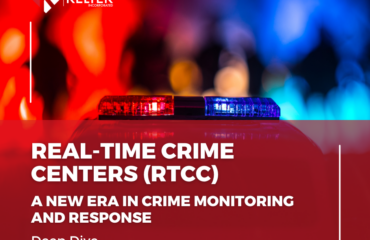Powering Greener Law Enforcement
Law enforcement agencies are not being left behind as the world increasingly moves towards sustainability. The adoption of electric and hybrid vehicles (EVs and HVs) is becoming more prevalent in police fleets across the globe. This shift not only supports environmental initiatives but also offers unique advantages in the context of policing. This blog post explores the emerging role of electric and hybrid vehicles in modern law enforcement.

Why Electric and Hybrid Vehicles?
Several factors drive the move towards electric and hybrid police vehicles. Environmental concerns top the list, as agencies aim to reduce carbon footprints and comply with government regulations on emissions. However, the benefits of EVs and HVs extend beyond just being green. They include cost savings on fuel, lower maintenance costs due to fewer moving parts, and the potential for a quieter approach that can be advantageous in certain policing situations.
Operational Advantages of EVs and HVs
- Stealth Operations: Electric vehicles are significantly quieter than their gasoline counterparts, which can be beneficial for covert operations or when approaching a scene unnoticed, which is crucial.
- Reduced Operational Costs: EVs and HVs can be more economical over the long term. They typically require less maintenance than traditional vehicles, as electric engines have fewer parts and do not require oil changes.
- High Performance: Many electric vehicles offer superior performance compared to traditional engines, with faster acceleration and higher torque. This can be advantageous during pursuits or when quick response times are critical.
- Energy Efficiency: Hybrid vehicles are particularly useful for the stop-start nature of urban policing, using less fuel and generating fewer emissions than standard patrol cars during idling and low-speed cruising.
Challenges in Implementation
Despite their advantages, integrating electric and hybrid vehicles into police fleets comes with challenges. The initial cost of EVs can be higher than traditional vehicles, although prices are decreasing as technology advances. There’s also the issue of infrastructure; sufficient charging stations must be available to support a fleet of electric vehicles, especially in rural or underserved areas.
Another consideration is the range of electric vehicles. Although it is improving rapidly, range anxiety—the fear of running out of power during a long shift or high-speed chase—remains a concern. Hybrid vehicles, which combine gasoline engines with electric power, are a practical middle ground, offering extended range when needed.
The Future of EVs and HVs in Policing
As technology progresses, the drawbacks of electric and hybrid vehicles will likely diminish. Innovations in battery life, charging technology, and vehicle performance are making EVs more viable for a range of law enforcement needs. Moreover, as governments push for greener solutions, incentives for adopting such technologies are likely to increase.
Electric and hybrid vehicles are poised to play a significant role in the future of law enforcement. Their environmental benefits and operational advantages make them an attractive option for agencies looking to modernize their fleets and reduce their ecological impact. As the technology continues to evolve, we can expect to see more police departments worldwide embracing these sustainable solutions, leading the charge towards a greener future in law enforcement.


